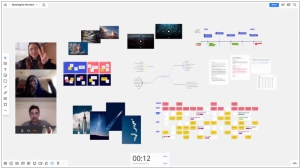Freemind vs Miro
June 18, 2023 | Author: Adam Levine
10
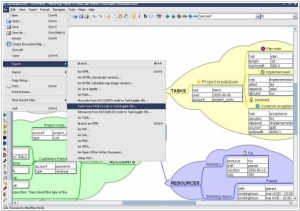
FreeMind is a premier free mind-mapping software written in Java. The recent development has hopefully turned it into high productivity tool. We are proud that the operation and navigation of FreeMind is faster than that of MindManager because of one-click "fold / unfold" and "follow link" operations.
See also:
Top 10 Mind Mapping software
Top 10 Mind Mapping software
Freemind and Miro are both valuable tools for visual collaboration, but they offer distinct features and serve different purposes. Freemind is an open-source mind mapping software that focuses on organizing ideas and creating hierarchical mind maps. It provides a simple and straightforward interface, allowing users to capture and connect their thoughts easily. Freemind is suitable for individuals and small teams who prioritize basic mind mapping functionalities. On the other hand, Miro is a versatile digital whiteboard platform that emphasizes collaborative work. It offers a wide range of visual collaboration tools, including sticky notes, diagrams, and templates, facilitating remote collaboration, brainstorming sessions, and interactive workshops. Miro is preferred by teams that require a comprehensive collaboration platform with diverse visual collaboration capabilities.
See also: Top 10 Mind Mapping software
See also: Top 10 Mind Mapping software
Freemind vs Miro in our news:
2020. Miro lands $50M Series B for digital whiteboard as demand surges
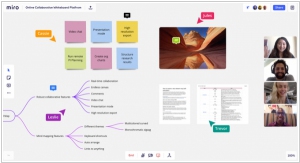
Miro, the creator of a digital whiteboard, is experiencing a significant surge in usage as businesses transition from physical workspaces to remote environments. In light of this, the company has recently announced an impressive $50 million Series B funding round. Miro sets itself apart by being more than just a lightweight add-in typically found in collaboration tools like Zoom or Microsoft Teams. It functions as a platform that integrates with various enterprise tools, much like Slack does for communication. This integration capability allows users to customize the base tool and build integrations with other commonly used tools, tailoring it to the specific needs of their teams or organizations. This approach has proven successful, with Miro reporting profitability and boasting more than 21,000 customers, including 80% of the Fortune 100 companies. Notable customers of Miro include Netflix, Salesforce, PwC, Spotify, Expedia, and Deloitte.
2018. RealtimeBoard, a visual collaboration platform for companies, raises $25M
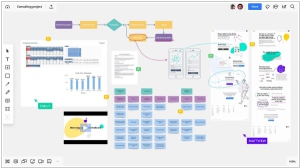
RealtimeBoard, an effective visual collaboration tool designed for distributed teams, has secured $25 million in Series A funding. The company intends to utilize the additional investment to support its ongoing expansion efforts. This includes enhancing customer acquisition capabilities through the strengthening of sales and marketing teams, as well as fostering growth within its user community. RealtimeBoard aims to develop a comprehensive visual collaboration platform that facilitates digital whiteboarding and serves as a central hub for integrating various collaboration tools utilized by organizations. Notable companies such as Hubspot, Skyscanner, Qlik, Autodesk, Netflix, and Twitter are among RealtimeBoard's esteemed customers, with the platform boasting a user base of 2 million worldwide. The startup generates revenue by offering its software-as-a-service (SaaS) on a per-seat basis for teams or entire companies.
2017. Freemind - free MindNode alternative
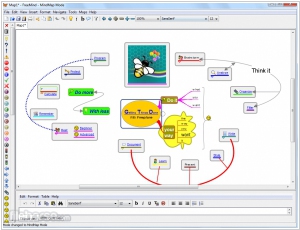
FreeMind is a mind-mapping software that operates on an open-source framework, providing competition to solutions such as MindNode and other similar tools. The software employs a familiar structure of points (referred to as nodes in FreeMind) branching out from a central topic, with additional nodes stemming from each branch. However, FreeMind truly distinguishes itself with its user-friendly click-and-drag interface, facilitating quick editing. Additionally, it offers HTML support, simplifying the sharing and navigation of your mind maps. Despite its somewhat outdated appearance and cumbersome menu system, FreeMind shines with its ease of use, offering convenient keyboard shortcuts for common tasks such as creating new nodes and applying formatting to ensure organizational efficiency. With a bit of time spent mastering its shortcuts, you'll discover that FreeMind is an incredibly valuable tool for project planning, exam preparation, and brainstorming new ideas.
2013. Freemind 1.0 adds real-time collaboration
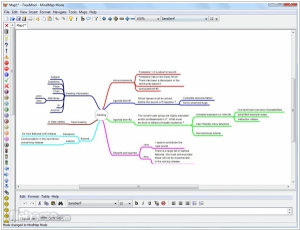
The latest iteration of mind-mapping software FreeMind has been launched, marking its first official version by number, although not its initial release. This update introduces significant new functionalities such as cloning, collaboration, and geographical maps. Users can now clone nodes and their sub-nodes, ensuring synchronization between the two copies. Multiple individuals can collaborate simultaneously on the same map, fostering efficient teamwork. Additionally, the ability to restore complete sessions has been implemented. Another notable addition is location-based mind mapping, offering users enhanced context for their maps. Furthermore, the inclusion of a spell checker serves as a valuable usability enhancement.

